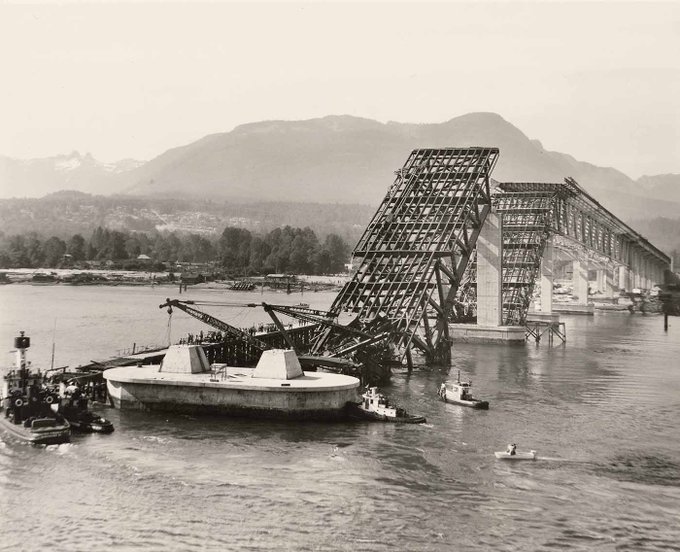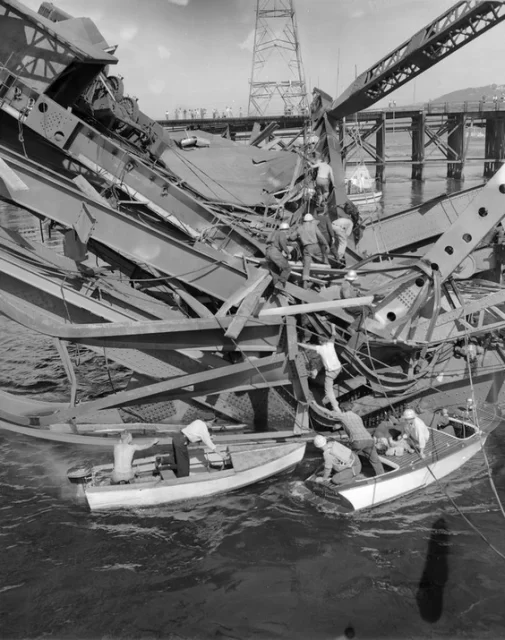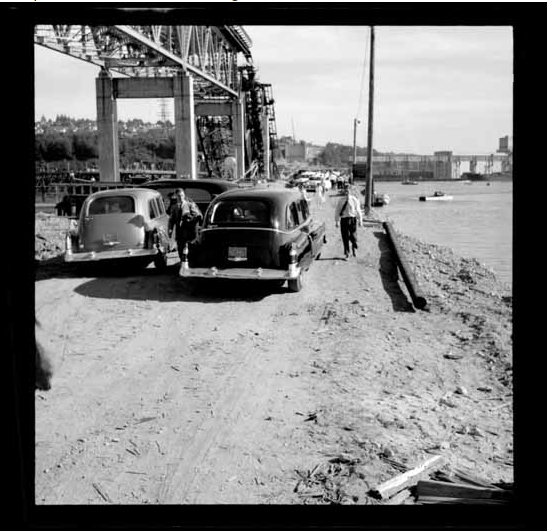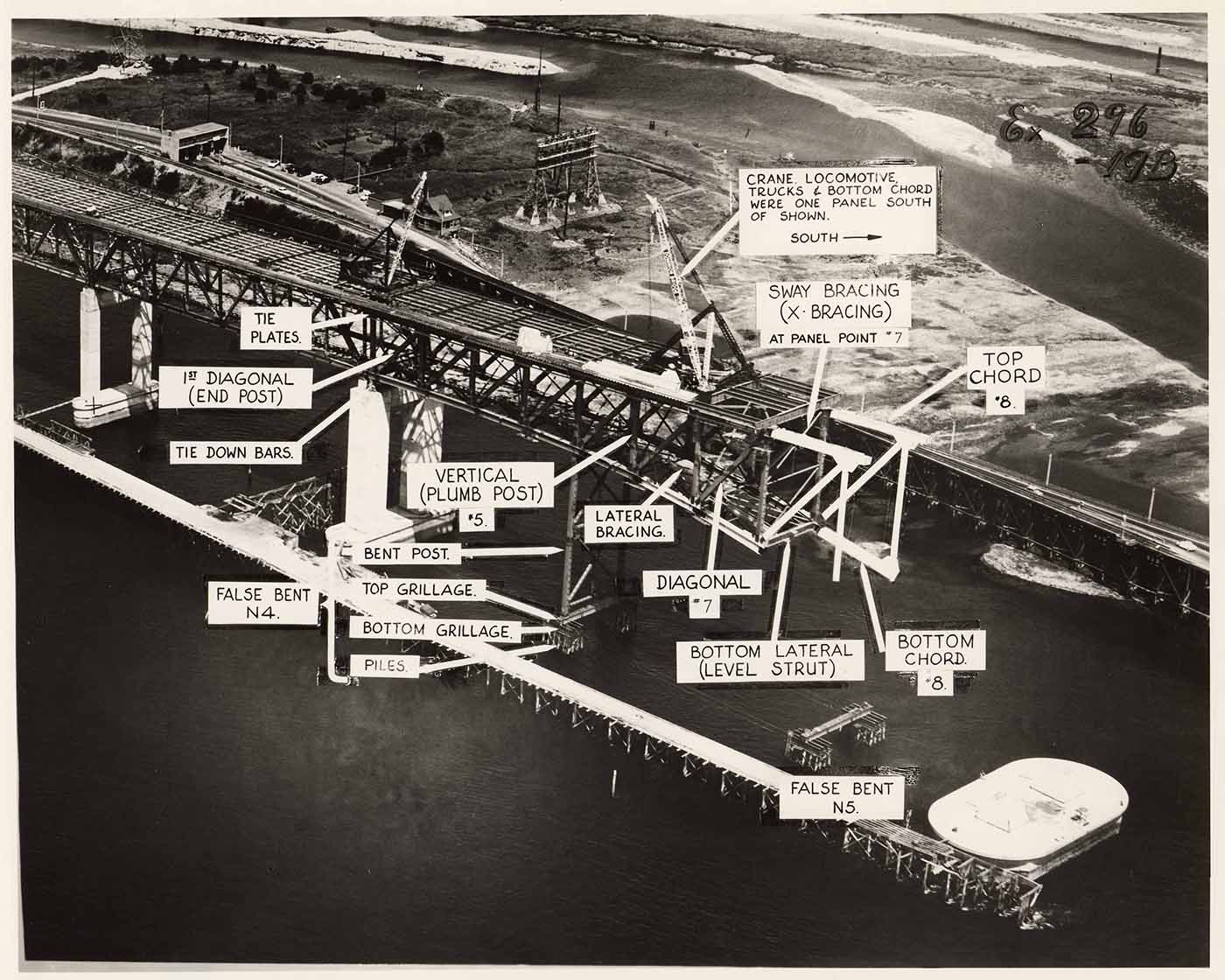The Second Narrows Bridge Collapsed on June 17, 1958, tossing 79 workers into Burrard Inlet and killing 18 of them.
Sounded like an explosion:
Some described the noise of the bridge collapsing into the Second Narrows as gunfire or an explosion, others as a rumble or a loud snapping sound. On June 17, 1958 at 3:40 p.m., people from all over Vancouver stopped to listen, as two spans collapsed, tossing 79 workers into Burrard Inlet and killing 18 of them.

Bill Moore was working on the bridge that day. “There were rivets snapping off and steel grinding against steel. We looked for a place to hide. There was no place to go. Some of the overhead steelwork crashed down on top of the pier and toppled into the water. Scaffolding fell around us,” he told a reporter. “I didn’t see very much but I could hear what was going on. Then everything was still. I’ve heard about ‘deafening silences.’ Now I know what they’re like.”
The massive rescue operation that followed was modelled after a worst-case scenario plane crash at YVR. Some of the men were identified by the brand of cigarettes that they smoked.

Lost a Diver:
Phil Nuytten, the North Vancouver entrepreneur, scientist and inventor of the Newtsuit, was only 17 at the time, and one of two divers sent to recover the bodies. The other diver, Len Mott, 27, became the nineteenth person to die on the job as a result of the bridge collapse.
This is a small part of Nuytten’s story that I’ve taken from an oral history at North Vancouver Archives.

“It was pretty macabre. The tool belts had pulled these guys down and they were standing on the bottom. Their upper torso was buoyant because they had life jackets on, but the tool belts were heavier than the lifejacket would support so they were standing on the bottom, with their arms and their hair facing in the direction of the current. They looked like they were walking, but they were long dead,” said Nuytten. “We found one guy who was crushed in a girder and there was no way to get him out. He was actually smashed in there. So an apprentice commercial diver named Lenny Mott was to try to burn this guy out of this girder and he wound up drowning.”
In 1994, the bridge’s name changed to the Ironworkers Memorial Second Narrows Crossing to honour those who died on the job that day.

The following sources were used for this post:
Eric Jamieson’s Tragedy at Second Narrows; How Come I’m Dead? by Glen McDonald (former Vancouver Coroner), and North Vancouver Archives
Related:

